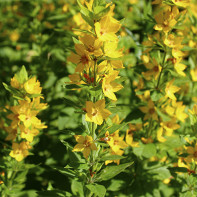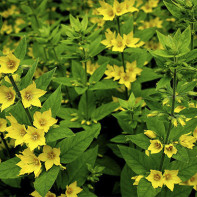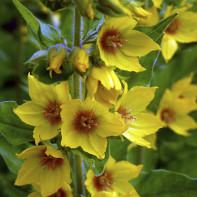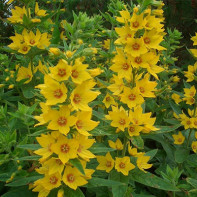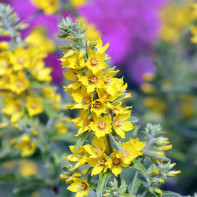Vertebrate: medicinal properties and contraindications
The herbaceous plant vertebrate got its name for the fact that its leaves are very similar to willow. It is also called in the people wound herb, meadow tea, snake root, monetochnik.
- Chemical composition
- How it looks and where it grows
- Types
- Gathering and storage
- Therapeutic properties of vertebrate
- Vertebrate in folk medicine
- From conjunctivitis
- For liver cleansing
- From hepatitis and liver disease
- For digestive problems
- Tea for colds
- For better blood flow
- For wet coughs
- For sprains and arthritis
- For thrush
- For bleeding
- For headaches
- Types of medicinal compositions
- Infusion
- Tincture
- Decoction
- Cosmetic Applications
- Face Tonic
- Healing Cube
- Hair Rinse
- Contraindications for use
Chemical Composition
Studies have found that the chemical composition of vervain has many beneficial substances for the human body.
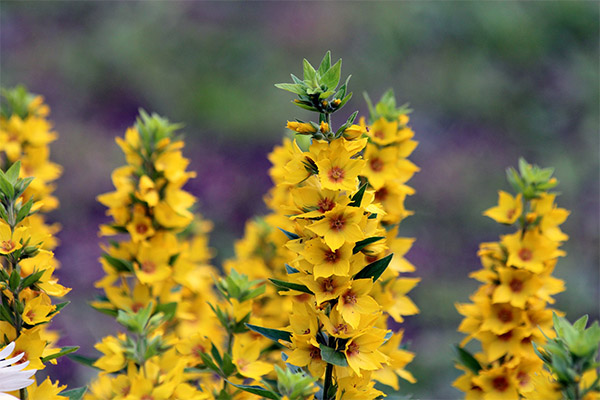
Tannins, tannins and flavonoids are known for their anti-inflammatory properties and ability to heal wounds. Tannins, organic acids (ascorbic, silicic, chlorogenic, caffeic), lactones and saponins normalize digestive function, putting the gastrointestinal tract in order.
Vitamins included in the plant increase the body's immune strength and its ability to resist bacterial and viral infections. Vitamin C, which is abundant in vertebrate during flowering, is especially high. In addition, vitamins, as another complex of substances contained in vertebrate, have an antioxidant function, including minerals and anthocyanins. Thanks to their presence, the metabolic process is established.
Already mentioned anthocyanins and flavonoids have another important role - they have the ability to increase the elasticity of vascular walls and inhibit the buildup of cholesterol on them. In particular, for this are responsible flavonoids kaempferol and quercetin, as well as its glycoside rutin (or vitamin P) and another component of verbenica - silicon.
A wide range of action has a constituent plant arginine. It is able to regenerate tissues, support the purification of the kidneys and liver, the nervous and cardiovascular system, stimulate the synthesis of insulin.
What it looks like and where it grows
Vertebrate is a herbaceous plant that can be either annual, biennial, or perennial. It can grow up to 2 m tall and bloom long - up to two and a half months - with yellow flowers gathered in tall panicles, so it is also popularly nicknamed 'yellow-headed'.
In fact verbeid can be found not only with yellow, but also with white or pinkish flowers, but still most often they are yellow. Each flower individually resembles a bell-shaped flower with five teeth and the same number of hidden stamens.
Verbeinum blooms from June to August, and then in August-September fruits ripen - egg-shaped or globular-shaped capsules.
The leaves of the plant can be elongated, lanceolate, with a smooth solid edge, ovate in shape. They sit on the trunk opposite each other - both in pairs, and 3, and even 4. The upper surface of the leaves is smooth, the lower is pubescent. The stems are mostly straight, standing, slightly branched at the top. But there are species with creeping stems.
Most vertebrates grow in the Northern Hemisphere, the greatest species diversity is found in North American regions and in East Asian countries. But some species are perfectly tolerant of natural conditions of the Southern Hemisphere: they grow in countries of South America and occupy areas in southern Africa. Very widespread vertebrate on the territory of Belarus. In Russia can be found 8 species of the plant, it settles all over the country, mainly in areas where the climate is temperate, although its thickets are noticed in the Caucasus and Crimea.
Verbeinum prefers to grow in sunny damp places: along rivers, around lakes and ponds, in well-watered but not swampy meadows, on the outskirts of forest belts. It likes peaty soil, in favorable conditions it spreads quickly and can turn into an aggressor, taking over new territories.
Thanks to its spectacular appearance, long flowering period and unpretentiousness, it is loved by dacha owners, who are happy to decorate their garden plots with it.
Types
Today there are almost 150 species of vertebrate, including natural and cultivated.
The most common and most widely used for medicinal purposes is the common vertebrate. It grows and in Europe, and in Asian countries, and in Russia, and in the north of Africa. People even grew it in small ponds at dachas, planting it about 10 cm deep. Characterized by lanceolate leaves, it grows up to 1 m in height. This species is considered by beekeepers as a fairly good honeybee.
It grows in the wild in Europe. It grows around ponds and lakes, along rivers and even goes up into the mountains and is found in the subalpine belt. This species does not grow taller than 30 cm, and its leaves are much wider and larger than those of the common species. Flowers are arranged singly rather than in inflorescences and are characterized by the presence of tall pedicels. The month of the beginning of flowering of the oak vertebrate is May.
Vertebrate cinquefoil, or kizlyak, prefers to settle right in the water, near the shore, or at the very edge of the shore. It grows up to 60 cm. Its stamens are so long that they stick out of the calyx, so the flowers look fluffy.
Pinot verbe is a typical inhabitant of wooded areas of western and central Europe. Its leaves are shaped like a broad lanceolate. It blooms comparatively briefly - about a month. The spot vertebrate has two most popular varieties - Alexander and Golden Alexander. Both differ in the rims on the edge of the leaf: the first variety is white and the second is golden in color.
Vertebrate bunting was born in China and has been introduced by florists in other areas. The date of its birth is 1992, when the first information about it appeared. It has very beautiful flowers - yellow with a red spot. The leaves of the bunched verbenet are very succulent, rich, bright green. The greatest interest of gardeners are its following varieties:
- Leecy - characterized by globular-shaped inflorescences.
- Outback Sunset - this variety is characterized by a yellow stripe on the leaves of dark green color.
- Persian Carpet - its green leaves are streaked with red veins.
- Persian chocolate - this variety has purple leaves, they do not die off in the fall.
Vertebrate lily of the valley, or cage-like, in natural conditions grows in the Primorsky Territory of Russia. It got its name for the external resemblance of its rhizome to that of lily of the valley. The stems grow only up to 20 cm, with equally long inflorescences-columns consisting of small pure-white flowers at their ends. The lily of the valley blooms late, in the last days of June, and blooms for only 2 to 3 weeks. In the 1990s, this species became a frequent guest on homestead plots. The most frequent varieties of it can be found are:
- Lady Jane - the total height of the plant (together with the inflorescence) can reach 60-90 cm.
- Geisha - this is a mottled variety, its leaves are rimmed at the edges with a band of beige and cream color.
Coinverbelle in Japan, countries of the North American continent and Europe grows on the edges of fens, rivers or lakes, in meadows flooded, but it can stand shade in groves. It is a perennial groundcover with recumbent stems. But the length of the stem is small - about 30 cm. Its flowering time depends entirely on how much sun hits the plant: in well-lit areas the flowers open from the end of May, in shaded areas - later. The most common variety is Aurea, it is characterized by greenish-yellow leaves.
Vertebrate purple, or ciliate, is a resident of North America, but it is cultivated in Russia as well. This beautiful plant is no taller than half a meter. It has unusually beautiful leaves - wide, wine-red in color. Blossoms in late August.
Homeland vertebrate purple-black is Greece. It got its name for its spike-like inflorescences, consisting of small flowers of dense dark maroon color. Its most common cultivated variety is Beaujolais. It begins to please the owner with flowering from the end of July.
Verbier ephemeral grows in Europe, in its southwestern regions. The plant is frost hardy and grows fast, it can reach 1 m in height. It is one of the oldest cultivated plants, and has been cultivated in gardens since the 19th century.
Gathering and storage
Vervain is collected when it blooms. The weather should be dry and sunny and the time of day should be closer to noon when the dew has gone. It is better not to take plants near roads or populated areas. In order not to doubt the ecological purity of raw materials, it is necessary to go to the edge of the forest, to the meadows, to a lake or a quarry.
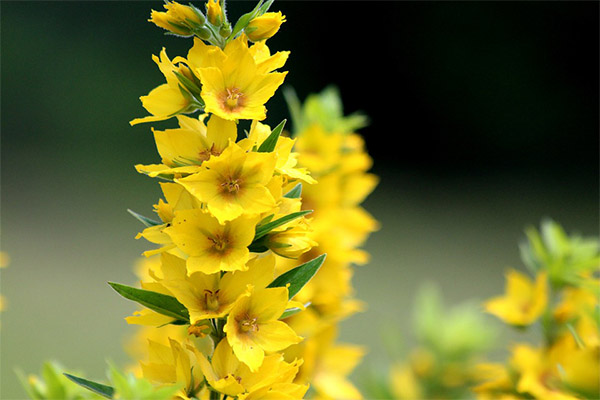
All the greenery of the plant is suitable for medicinal purposes. Therefore, with secateurs, a sharp knife or even a sickle, which was used even by grandmothers, cut the stem about 5-6 cm from the ground. Then the herbs are sorted out, carefully removing dry, torn, eaten by insects or darkened fragments, then cut into small pieces of length from 5 to 7 cm and washed. Washed raw material is spread on clean paper or gauze in the shade in a draft. The air temperature should be at least 24-25 degrees, otherwise the grass will not dry and rot. If the weather is cool, it is better to dry vervain in an electric dryer.
Ready dried raw material is spread in cardboard boxes, paper bags or bags of cotton cloth. In this form, the medicinal plant can be stored for up to two years.
You can make vervain juice. After washing herbs let the water drain off, then grind in a blender to a pulp and squeeze through a folded in 4-6 layers of gauze. The juice can be put in the refrigerator, but no more than two months it will not remain useful in the freezer for several years.
Medicinal properties of vervain
It has been found that medicines prepared from vertebrate, beneficially affect the blood circulation system due to the fact that they make blood vessels more elastic and do not allow cholesterol plaques to settle on them, help keep the patency of blood vessels under control.
Compositions based on the medicinal plant (and even just ground to powdered dried raw materials) are recommended for cuts, burns, abrasions, because they have hemostatic, wound healing and astringent action. The astringent action is also used in the treatment of diarrhea.
The diuretic and anticonvulsant properties of the medicinal plant are applicable to put in order the liver, biliary tract and gastrointestinal tract. For these purposes, not the green part of the plant is used more often, but the rhizomes. In the same cases, the analgesic abilities of vertebrate also help. It is also used to anesthetize painful joints - compresses, lotions and applications are applied for rheumatism, injuries, bruises, sprains and dislocations.
In addition, vervain has antiseptic properties, so preparations made from it can be used to treat wet coughs, gargle with sore throat, as well as to get rid of dental problems - sores and ulcers in stomatitis. Infusions and decoctions not only treat inflammation, but also eliminate bad breath. Antiseptic and styptic properties of the plant are also used in gynecology.
The presence of a large amount of vitamin C helps the human body to recover faster not only after colds and respiratory infections, but also gives strength after prolonged debilitating internal diseases, relieves weakness and lifts the mood. Vitamin C is good for preventing scurvy, and vervetvet can also be used to treat the initial stages of this disease.
Vertebrate in traditional medicine
Verbeinicum has long been used by representatives of Tibetan and Chinese medicine, adopting from their wisest predecessors the deep and long-standing traditions of healing. Of course, for their healing compositions they use those rare species of plants that grow in their locality.
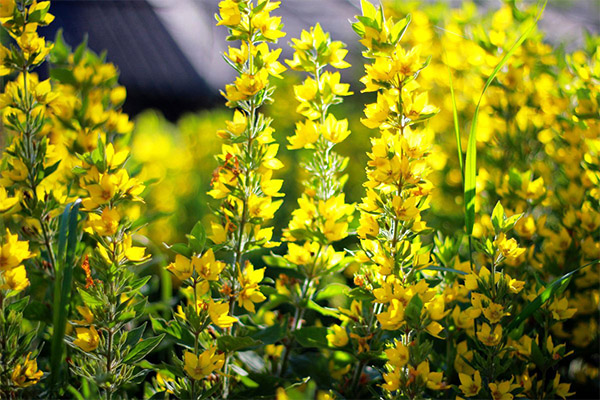
But in our country too, folk healers know a lot about healing herbs, but in their arsenal is common vertebrate. It is the most widespread throughout the globe, but the therapeutic effect of its use is no worse.
Folk medicine has learned to heal yeast infection, rheumatism, eczema and dermatitis, heal external healed wounds, scratches, burns, stop bleeding, relieve joint pain, help with stomatitis and periodontal disease, improve digestion. It is noted that this herb relieves pain and swelling during insect bites and solves a lot of other problems: calms frayed nerves and helps normalize sleep, lower blood pressure, improves mood and strengthens immunity.
Healers prescribe decoctions, infusions and tinctures, freshly squeezed vervain juice, recommend tea for colds. All these medicinal forms are good - each for a particular disease. The main thing is not to forget to consult with your doctor before starting to take the remedies.
For Conjunctivitis
Squeeze 2 tablespoons of juice, dilute it with boiled water in the same amount and drop into both eyes 2 times a day until recovery. These same drops can be used to treat stuffy nose with a cold.
To cleanse the liver
To clean the liver, get rid of toxins and slags, you need to prepare a tincture in vodka: 2 large tablespoons on top of the herb mixed with a glass of good vodka and insist in a dark glass container for 7 to 10 days. Strain and drink before dinner and supper, dropping 20 drops in a glass and pouring water to the top.
For hepatitis and liver diseases.
Prepare an extract of 50 grams of dried rhizomes. Keep in 500 ml of good, tested vodka for 2 weeks in a dark, cool room. Take up to 10 days before breakfast, lunch and dinner, 20 drops diluted in 50 ml of water.
In case of problem digestion
To correct digestive problems, relieve stomach ailments and get rid of constipation, healers prescribe an infusion. Dried herb (about a teaspoon) pour 250 ml of boiling water and leave under a lid for 50-60 minutes. Drink once - 50 ml per day. This remedy also helps with anemia, arthritis and as a gargle for stomatitis, gingivitis and periodontal disease.
Tea for colds
This tea can be drunk, and it is also useful for sore throat gargle. Sixty grams of dried herbs of the plant to brew a liter of just boiling water and infuse as normal tea.
To improve blood flow
This remedy improves blood vessels and serves as a prevention of atherosclerosis. Grind in a coffee grinder 10 grams of dried rhizomes verbeinik, brew in a thermos of boiling water in an amount of 250 ml and soak 40-45 minutes. Strain and drink for 2 weeks to 50-70 ml before each meal. You can soak a thick cotton cloth in the warm medicinal composition and put it on the skin affected by eczema or dermatitis. Repeat the procedure in the morning and evening.
For wet cough
2 tablespoons of dried vertebrate herbs scald 500 ml of boiling water and steep in it for 20-25 minutes. At one time to drink a glass of infusion, adding a spoon of honey. Take better in the evening, before going to bed.
For sprains and arthritis.
Grate fresh vervain leaves, rinse them and beat in a blender. The resulting mush put on a cotton rag and put on the painful joints for 30-40 minutes. Means to help relieve arthritis, rheumatism, bruises and sprains.
From thrush
Prepare a composition for douches: insist on a water bath for 20-25 minutes 2 tablespoons of dried verbenica grass, pour 500 ml of boiling water. Strain and doubles doubles a day to doubles doubles with thrush. The course of treatment - a week. The remedy prepared according to this recipe is effective against edema, if you drink it 4 to 5 times a day regardless of meals.
To stop bleeding
To reduce menstrual discharge helps infusion, prepared from a tablespoon of dried verbeinic leaves and a small glass of boiling water, which you must pour the medicinal plant and insist for 6 hours. Strain and drink the resulting composition in two drinks - in the morning and in the evening. Course reception - a week.
From a headache
During a cold or flu, it is not uncommon to have a headache. To get rid of it, you need to brew a mixture of 2 tablespoons each of dried verbeinicum, chamomile and rosemary. Mix the herbs and pour 400 ml of boiling water. Take after cooling and strain. The resulting composition to divide into two portions - for daytime reception and evening.
Types of medicinal compositions
To use vervain as a remedy, you can prepare infusions, eye and runny nose drops, decoctions, tinctures, and brewed tea. You can simply sprinkle cuts, wounds, abrasions, and burns with the dried and crushed into powder medicinal raw material.
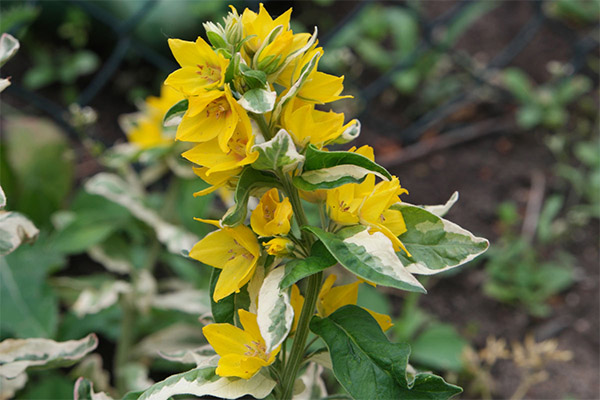
Infusion .
You can prepare an infusion of verbenicum at home by yourself. To do this, in a small pot or mug with a lid, pour 0.5 l of boiling water 2 tablespoons (with a slide) of dry grass. Insist an hour, then strain and drink. If suffering from a cough, headache, infusion take a tablespoon three times a day. It also helps to eliminate constipation, get rid of scurvy and anemia.
Tincture .
To restore strength after a long illness, you can take a tincture in vodka. To do this, 2 tablespoons of fresh vervain herbs pour in a dark glass bottle with 200 ml of quality vodka, cover well and put in a closet, away from sunlight. You can take out the bottle from time to time and shake it. After a week, take out of the cabinet, strain and drink four times a day, taking 15-20 drops at a time.
It is useful to wash dirty wounds or abrasions with this tincture.
Decoction
To prepare a decoction of vertebrate, you need to pour steep boiling water over dried vertebrate. Take 400 ml of liquid for 40 g of medicinal raw materials. Send to steam for half an hour in a water bath. Remove, cool to room temperature and strain. Drink 100 ml before breakfast and dinner. It helps to strengthen the immune system, soothe coughs, relieve headaches.
With a warm decoction you can make compresses, if aching joints or painful bruised arm or leg, laying for 3 hours on the sore spot and warmed with a scarf or woolen scarf.
Cosmetic Applications
Since vervain has antiseptic and wound-healing properties, you can use it to relieve various inflammations of the skin. Compositions based on this useful plant can also moisturize the skin, make it look healthier and more attractive. They are also useful for hair, because with its help you can strengthen it, get rid of hair loss. Means from vervain stimulate hair growth, and if you apply them systematically, you can achieve that the curls become beautiful and shiny. For this purpose, most often use a decoction or infusion. You can add 2-3 drops of juice squeezed from the herb to the hair conditioner that is usually used. The effect will be noticeable after the third or fourth wash of the head.
Facial tonic
To prepare a tonic, you must first make an infusion: pour 2/3 of a tablespoon of crushed dried verbaine grass in hot water in an amount of 200 ml. Composition to infuse until it becomes room temperature. Strain the infusion and wipe his face in the evening, before bed. Helps with pustular inflammation, rashes and irritation.
Healing cubes
Dilute the juice squeezed from the vervain greens with water: take 5 parts of boiled water for one part of the juice. Mix, pour into ice molds and put in the freezer. Use to wipe your face as needed. The skin will be saturated with vitamins, and the complexion will improve.
Hair Rinse
Prepare a decoction of verbein: half a liter of boiling water pour 2 tablespoons of grass - dried or freshly picked. Place on a water bath for half an hour, remove and wait until it cools to room temperature. Strain and dilute the resulting decoction with water at a ratio of 1:1. Wash your head with shampoo, rinse it off and rinse your hair with a healing infusion of verbeinik.
Contraindications for use
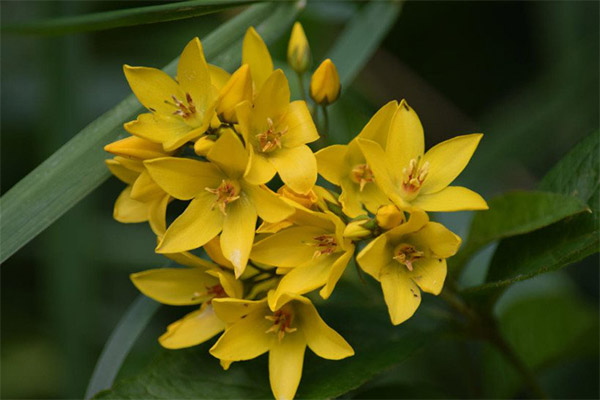
Like any medicinal plant, verbeinicum has a number of limitations. It should not be used by people suffering from varicose veins, thrombosis, as well as those who have increased blood clotting. Patients with high blood pressure and sclerosis of the vessels are prohibited compositions based on it.
In addition, it is quite possible individual intolerance to the plant.
Before starting treatment with medicinal compositions from verbeinicum, it is necessary to talk about this subject with your doctor and get from him the appropriate recommendations.
«Important: All information on this site is provided solely for introductory purposes. Consult a specialist before applying any recommendations. medical professional before using any of the recommendations. Neither the editors nor the authors shall be liable for any possible harm caused by materials."

